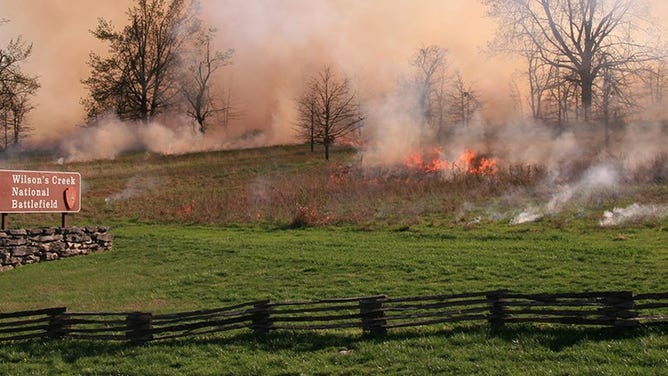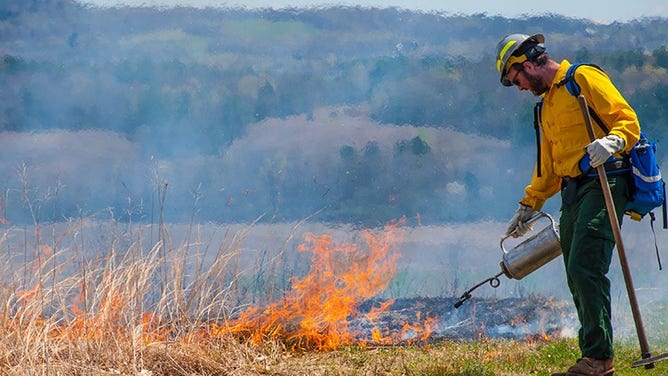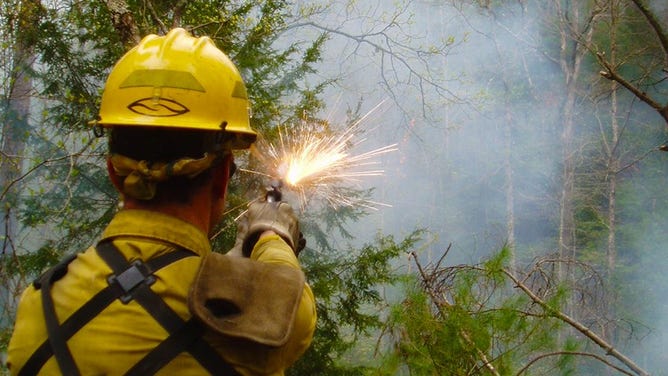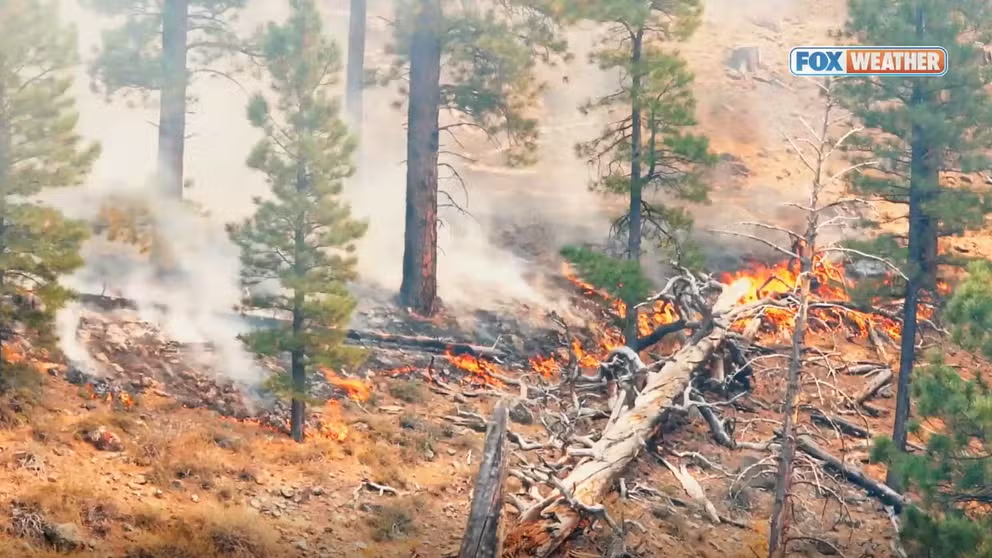7 things to know about prescribed burns
These wildfires are beneficial to the environment
The Lifecycle of a Wildfire: From a spark to flames
The Lifecycle of Wildfires, how they develop and extinguish.
Not all wildfires are bad for the environment. Sometimes, wildfires can be beneficial to people and the land.
This is where prescribed burns come into play.
Also known as a controlled burn or a planned fire, these are used to meet management objectives. In fact, some ecosystems need periodic fires to stay healthy.
A prescribed burn is essentially "the right fire at the right place at the right time," according to the United States Forest Service, an agency of the U.S. Department of Agriculture.

Wilson’s Creek National Battlefield in Missouri, maintained by prescribed fire, commemorates a Civil War battle in 1861.
(National Park Service/M. Johnson)
After many years of "fire exclusion" – the "defacto policy of trying to eliminate fires from the landscape using fire-suppression techniques" – an ecosystem that needs periodic fire becomes unhealthy, the Forest Service noted. For example, trees can become stressed by overcrowding, fire-dependent species may disappear and flammable fuels could build up and become hazardous.
THE COMPLEX RELATIONSHIP BETWEEN WILDFIRES AND WILDLIFE
Here are seven things to know about these prescribed burns and how they benefit the environment – not harm it – according to the Forest Service:
- Reduce hazardous fuels to prevent the ignition of future destructive fires and protect nearby human communities
- Minimize the spread of pest insects and any diseases they carry
- Remove unwanted species that threaten an ecosystem’s native species
- Clear the land to stimulate agricultural growth as a food source (forage) for wild animals (game) that are hunted for meat or recreation
- Improve the habitat for threatened and endangered species
- Recycle essential nutrients back into the soil
- Promote the growth of trees, wildflowers and other plants
The U.S. National Park Service noted that prescribed burns can also be the most cost-effective way to maintain certain historic scenes, including the open grasslands of the Revolutionary War era at Saratoga National Historical Park in New York and the oak-prairie savanna of the Civil War era at Wilson’s Creek National Battlefield in Missouri.

Prescribed fire at the Revolutionary War-era Saratoga National Historical Park in New York is used to maintain a historic landscape.
(National Park Service/A. Bracewell)
Management-ignited prescribed burns are used in most parks to manage vegetation rather than lightning-induced fires, according to the NPS. A park must complete a fire management plan and a prescribed burn plan before any prescribed burns are permitted, and the weather conditions must also allow for safe-burning practices.
In general, prescribed burns are not allowed unless the temperature is below 60 degrees, the relative humidity is greater than 40% and wind speeds 6 feet above the ground are between 5 to 15 mph, according to Oklahoma State University.

Igniting a prescribed fire by flare gun at Great Smoky Mountains National Park in Tennessee.
(National Park Servce/B. Dellinger)
